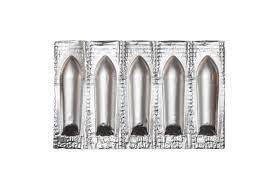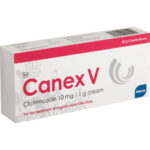What Is A Suppository? How to Use Them

What is a suppository?
The word suppository is derived from the Latin suppositorum, which means, “something placed beneath.” A Suppository refers to solid medications that enter the body through the rectum, vagina, or urethra. Rectal suppositories are the most common type of suppository.
Suppositories are sometimes used as alternatives when oral dosing results in significant breakdown of essential oils in the gastrointestinal tract or by first-pass metabolism in the liver, and where high systemic concentrations are desired. Another advantage is that it is the most efficient way to administer a remedy locally to the lower colon.
Doctors recommend the different forms of suppositories for different medical conditions and purposes. People place some in the rectum and others in the vagina. Less commonly, a person will need to use urethral suppositories.
How to safely insert a suppository
Inserting Rectal Suppositories
- If possible, go to the toilet and empty bowels.
- Wash hands carefully with soap and warm water.
- Remove any foil or plastic wrapping from the suppository.
- Lubricate the tapered end of the suppository with a small amount of K-Y Jelly. If the jelly is not available, moisten the suppository with a small amount of water.
- Either stand with one leg on a chair, or lay on one side with one leg straight and the other leg bent toward your stomach.
Separate buttocks to expose the rectal area.
- Gently but firmly push the suppository into the rectum until it passes the sphincter (about 1/2 to 1 inch in infants, and 1 inch in adults).
- Close your legs and sit (or lay) still for about 15 minutes. Avoid emptying bowels for at least one hour (unless the suppository is a laxative). Avoid excessive movement or exercise for at least one hour.
- Wash hands again with soap and warm water immediately after inserting the suppository.
Inserting Vaginal Suppositories
- Wash your hands carefully with soap and warm water.
- Remove any foil or plastic wrapping from suppository.
- Place suppository in applicator.
- Hold the applicator by the opposite end from where the suppository is.
- Either lay on your back with your knees bent, or stand with your feet spread a few inches apart and your knees bent.
- Gently insert the applicator into the vagina as far as it will go comfortably. Once you are ready, push the inside of the applicator in and place the suppository as far back in the vagina as possible.
- Remove the applicator for the vagina.
- Wash your hands again with soap and warm water.
How long does it take for a suppository to work?
Once inserted, the medication dissolves and enters the bloodstream. Depending on the active ingredient, suppositories can work to either soften the stool or to stimulate the muscles of your bowels in order to better ease movement of stool. Suppositories work the fastest, within 15 to 30 minutes.
The length of time it takes for a vaginal suppository to dissolve varies on a number of factors, including your body temperature, the temperature of suppository prior to insertion, and the type of base. On average most suppositories will melt in 10-15 minutes, although it can take up to a half hours.
Analgesic suppositories take a few hours to work. There’s no difference in how well the tablets, capsules or suppositories work.
How long after suppository Can I poop?
After 60 minutes (1 hour) after inserting the suppository you can pass stool. Not passing stool early gives the medication enough time to enter the bloodstream and start working. However, this rule does not apply if the medication is a laxative.
What to do after inserting a suppository?
Avoid exercise or lots of movement for one hour. Store the suppositories in a cool place to prevent melting. Keep them in the refrigerator if the medication label says to do so.





